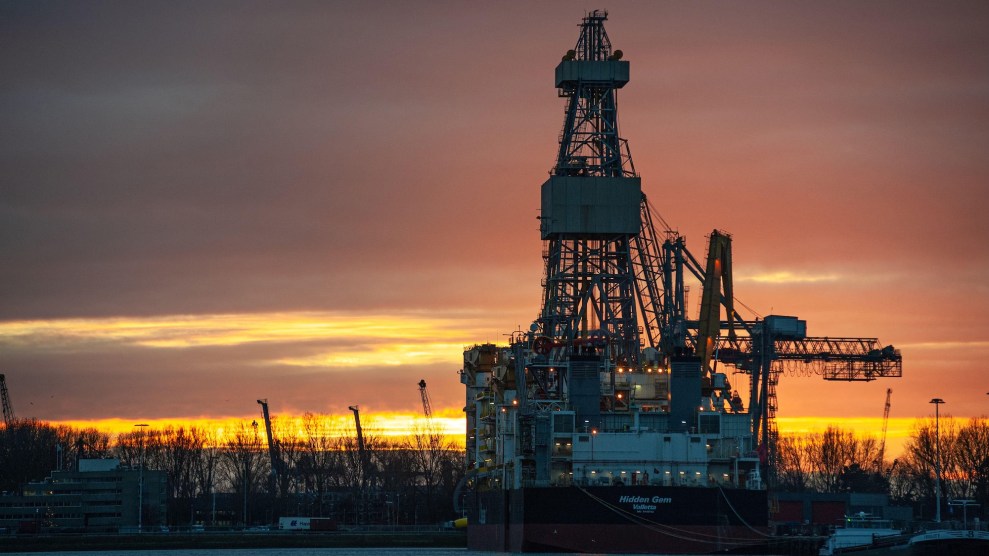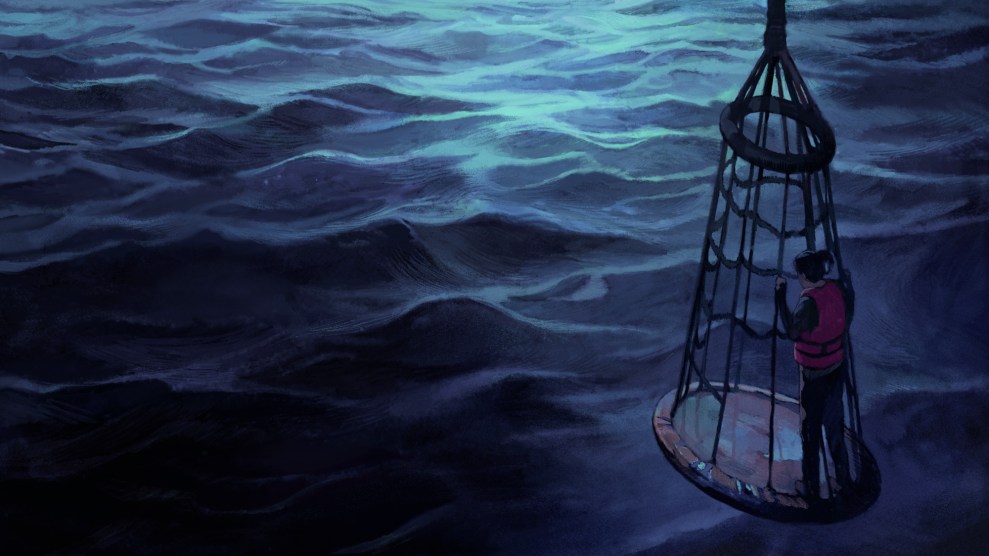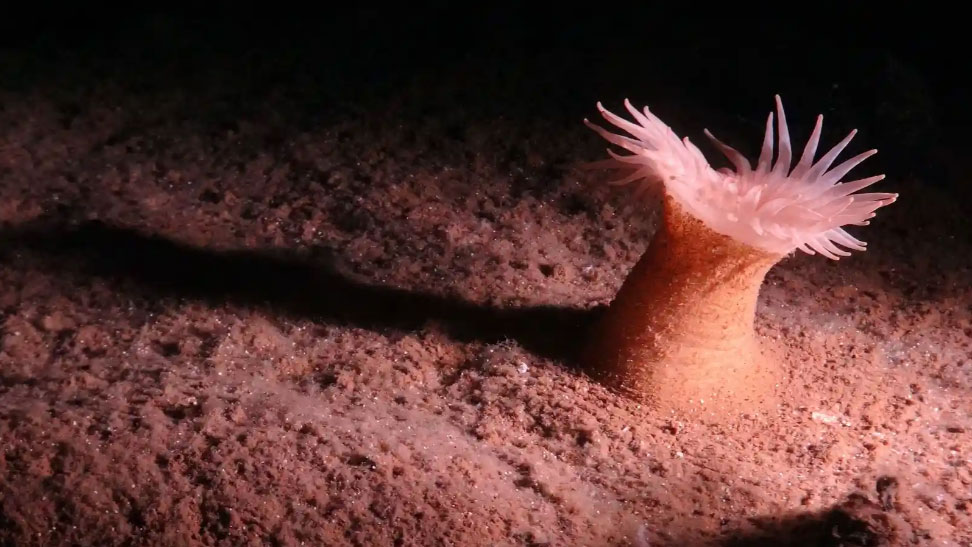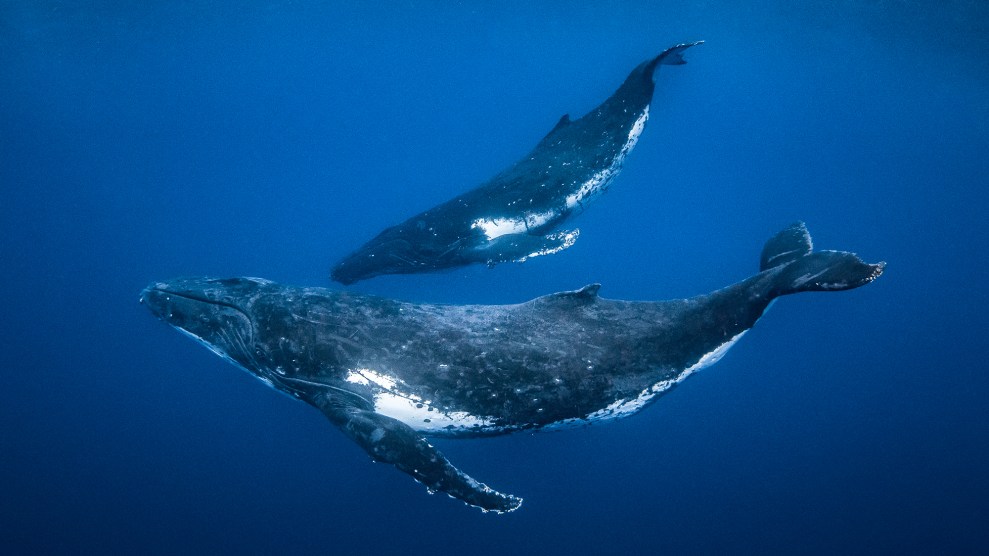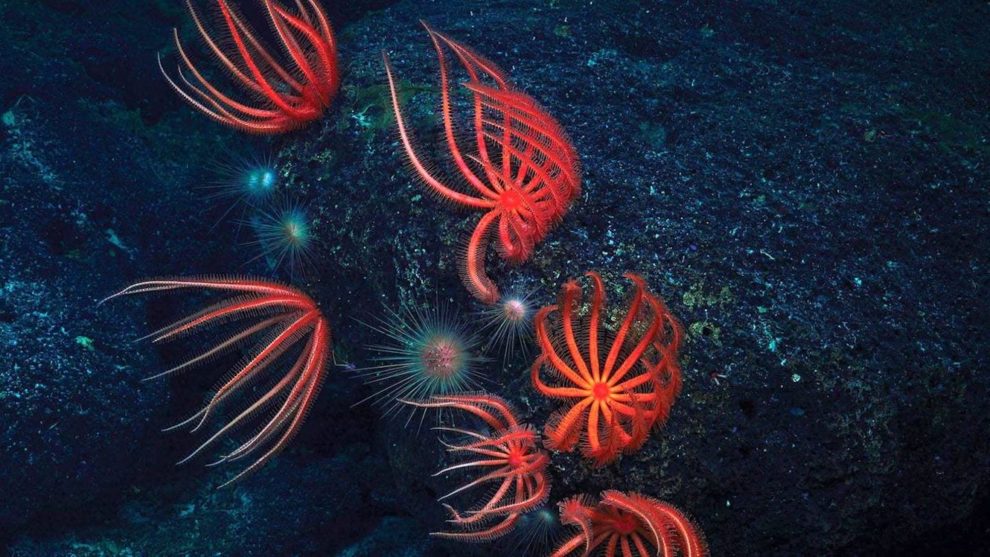
Brisingid sea stars are found in deep sea areas rich in critical minerals.Woods Hole Oceanographic Institution
This story was originally published by Yale Environment 360 and is reproduced here as part of the Climate Desk collaboration.
Few people know the deep ocean as intimately as Lisa Levin, an ecologist at the Scripps Institution of Oceanography. Not content with doing pure science, Levin, who has participated in more than 40 oceanographic expeditions, co-founded the Deep-Ocean Stewardship Initiative, a global network of more than 2,000 scientists, economists, and legal experts that seeks to advise policymakers on managing the ocean’s depths.
Of particular concern to Levin now is the prospect of deep-sea mining. The tiny island nation of Nauru has notified the International Seabed Authority on behalf of its Canadian partner, the Metals Company, of its intent to seek a permit to mine in the Clarion-Clipperton Zone, a 1.7-million-square-mile region of the Pacific where polymetatallic nodules are scattered that have high concentrations of cobalt and other valuable minerals.
The ISA, formed by the UN in 1994, is required to issue mining codes that would regulate deep-sea mining by July 9. If it fails to do so, some scientists and environmentalists fear that a controversial rule may allow mining to begin nonetheless. While Levin told Yale Environment 360 that she doubts we’ll see it happen this year, she too worries that pressure is mounting to start mining soon.
Mining companies argue that land-based sources for these metals are running out and that they are critically needed for green technologies like producing batteries for electric vehicles and manufacturing solar panels and wind turbines. They also claim that mining in the deep sea will be less environmentally damaging than land-based mining.
In an interview with e360, Levin disagreed. “It’s a highly destructive process,” she said. “People talk about sustainable mining. I think it’s an oxymoron in the deep sea. But society has to decide—should we do it, and is it worth the cost?”
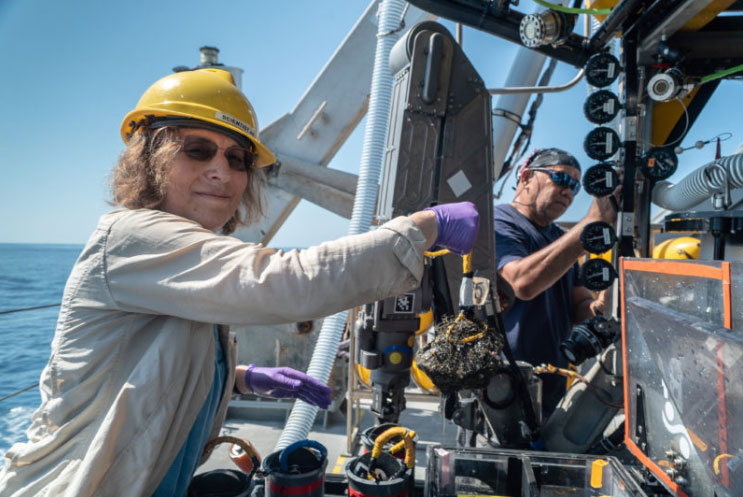
Ecologist Lisa Levin collects samples gathered by a remotely operated vehicle.
Schmidt Ocean Institute
The deep sea is viewed by many as a kind of watery desert. There may be a few creatures floating around down there, but people don’t think of it as a thriving ecosystem. Is that just wrong?
There are actually surprisingly diverse and rich ecosystems, but sometimes the organisms are small, only a few millimeters in size. For example, in the nodule zone that they’re interested in mining, most of the animals are very, very small. We may think it is unpopulated, because we don’t see many big charismatic organisms there.
People may say, “This is a marginal area, why do we have to worry about it?”
You could go to a very remote section of the Amazon rainforest that nobody has explored and say, “Why is it important?” There are actually many parallels with the rainforest. One is that the animals in the deep sea can live for a very long time. Some fish can live for hundreds of years. Some of the invertebrates, like corals or sponges, live for thousands of years.
Like the rainforest, the deep sea is also extremely vulnerable to physical disturbance. Once the ocean bottom is hit by a trawl [fishing] net, you’ve lost four or five thousand years of life for many corals and sponges. Around 15 percent of our continental margins have already been trawled, leaving vast piles of rubble where deep sea corals once thrived.
There has been talk of deep-sea mining for decades now. But it hasn’t started yet. Some believe that deep-sea mining may begin as early as this summer, if the ISA does not meet the July deadline for finalizing its rules for environmental regulation. Do you share the concerns that mining is imminent?
The only operation that could start mining very soon is the Metals Company and Nauru. I don’t know the state of their technology, but I would guess that they are not ready for large-scale mining at this point. I doubt that they would be in the water mining commercially this year [even if the ISA gives them approval].
Still, we appear to be edging ever closer to seabed mining. Do we know enough yet to start doing that?
In fact, we know very little about what the impacts of deep-sea mining will be. We’ve probably mapped 20 to 25 percent of the ocean floor, but we’ve only studied the ecology of a small fraction of that. We need to know what’s there in terms of species, and we need to know what we’ll lose if we destroy these areas by mining. We also need to know what genetic resources are there, what fisheries services will be lost, how much carbon is sequestered. But we simply don’t have that knowledge yet.
The industry argues that they can mine with minimal impact. Are they wrong?
It’s a highly destructive process. People talk about sustainable mining. I think it’s an oxymoron in the deep sea. But society has to decide—should we do it, and is it worth the cost? At the moment, there are 15 to 20 governments that have advocated for a moratorium [on deep-sea mining]. But there are 167 member states in the ISA. We don’t know yet what they will decide.
Some mining companies say that metals from the ocean floor are needed for the rapid expansion of green technologies. They also claim that deep-sea mining is less destructive than land mining. Is there a green argument for this?
Land mining is very destructive. But the footprint is much, much smaller. I mean the largest coal mine in Germany is less than half the size of the area that would be mined for polymetallic nodules in the Clarion-Clipperton Zone in one year by one contractor.
The nodules are concentrated in a thin layer at the top of the seabed—only 4 inches deep. So you are talking about stripping the sea bottom of many, many thousands of square miles potentially. The same with the seamounts [undersea mountains], which are also targeted. Their ferro-manganese crusts are only a few centimeters thick, so they have to tear up [large areas to mine] this superficial feature.
That’s right, there are ISA exploration contracts on the mid-Atlantic Ocean ridge and the southwest Indian Ocean ridge and there are also hundreds of claims that have been made in west Pacific island nations which have leased their waters for mining hydrothermal vents [which contain silver, gold, and other minerals]. The species that live there are highly adapted just to the vent ecosystems, and many are endemic and only live at a handful of vents, so there is concern that they run the risk of extinction.
You’ve said that oil and gas production is getting deeper and deeper. Is that a concern?
We’re fishing ever deeper, and we’re also drilling ever deeper. Look at the Deepwater Horizon which blew out and spilled tremendous amounts of oil in the Gulf of Mexico at around 1,500 meters in 2010. It damaged an area where the biodiversity had not yet even been described by science.
One of the risks of deep-sea mining is that you will be stirring up the bottom sediment. Why is that a problem?
By mining the nodules, sediment plumes will be released that may impact large areas of the ocean. These particles in what is normally quite clear water can clog the feeding apparatus [of deepwater organisms]; it can be mistaken for food; it can release contaminants, radioactive and metal contaminants, as well as carbon. A lot of animals use bioluminescence to communicate, find mates, locate prey. These particles could change light transmission in the water and interfere with their ability to function.
And it is not just the resuspended particles [at the ocean bottom]. After the ore is removed from the sediment on the [mining] ship, they have what they call “return water” which will be full of particles and contaminants which have to be put down somewhere. It’s not clear where that is going to go. That could impact vertically migrating fishes [higher up in the water column] in ways that can ultimately affect tuna and other important fisheries that exist in the area.
A lot of carbon gets sequestered at the bottom of the sea. A recent study showed that bottom trawling [for fishing] releases as much carbon dioxide annually as global aviation. Is deep-sea mining likely to have a similar effect?
Probably not. It’s hard to know. Bottom-trawling is usually on continental margins where the carbon accumulation rates are very high. Whereas in the abyssal plain [where the polymetallic nodules may be mined], the carbon content of that sediment is relatively low. So it’s hard to know if the amount of carbon released would have a big effect on the carbon cycle and our carbon budgets and CO2 emissions.
There is the expression “out of sight, out of mind.” Why should people care about the deep sea, which few have seen and seems so remote from our lives?
We always have a very anthropocentric answer to that question. There is an existence value to knowing that this biodiversity is out there even if we are not using it. Why should people care? We should care because it is there. And it is relatively pristine compared to other ecosystems that we have on land.
There are also all the reasons having to do with global cycles, nutrient regeneration that allows the productivity for fisheries, all the carbon cycling that keeps the planet healthy. The ocean and the deep ocean take up most of the excess heat and about a third of the excess carbon dioxide. Our climate wouldn’t be livable if we didn’t have a healthy ocean doing all of that, and the life of the ocean is a big part of that cycle. There is also the future potential of the ocean to provide solutions to problems we already know about, like climate change, but also other problems that we don’t have yet, like illnesses of the future that we will need solutions for.
We are at a really pivotal time. We still haven’t destroyed most of [the ocean ecosystem]. I think we can make good decisions going forward and keep a lot of it pristine and functional for the planet.
Who will be making these decisions?
One of the problems may be that there are so many different agencies, each with their own little niches of responsibility, but they are not always talking with each other, and they are making independent decisions. There are [international] conventions on biodiversity, and conventions that address climate, and conventions that address whales and whale conservation, and conventions that address endangered species, and some that do fishing—they are all separate. And yet, they shouldn’t be managed separately, because every single thing I mentioned is affected by every other thing I mentioned. It is all interconnected, and yet we don’t manage it in any kind of interconnected way. That highly sectoral feature of the UN is really problematic for the ocean.
Are you hopeful nevertheless?
I’m fairly hopeful. We have a lot of opportunities to make good policy. And I think there is increasing awareness. More people understand the critical role of the ocean now. The science is so much better than it used to be. There are many NGOs and science networks working for good decision-making. It’s clear that interest in protecting the sea and the deep sea in particular is growing.
